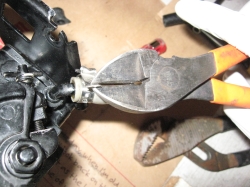avi8or3117
New Member
Hello,
After reading a lot of threads I have decided to replace my old,gray fuel lines on my SeaDoo. Are there particular ones I should replace or should I replace all of them? Also are there any Do"s and Dont's that I should be aware of before I do this? Thanks
After reading a lot of threads I have decided to replace my old,gray fuel lines on my SeaDoo. Are there particular ones I should replace or should I replace all of them? Also are there any Do"s and Dont's that I should be aware of before I do this? Thanks





